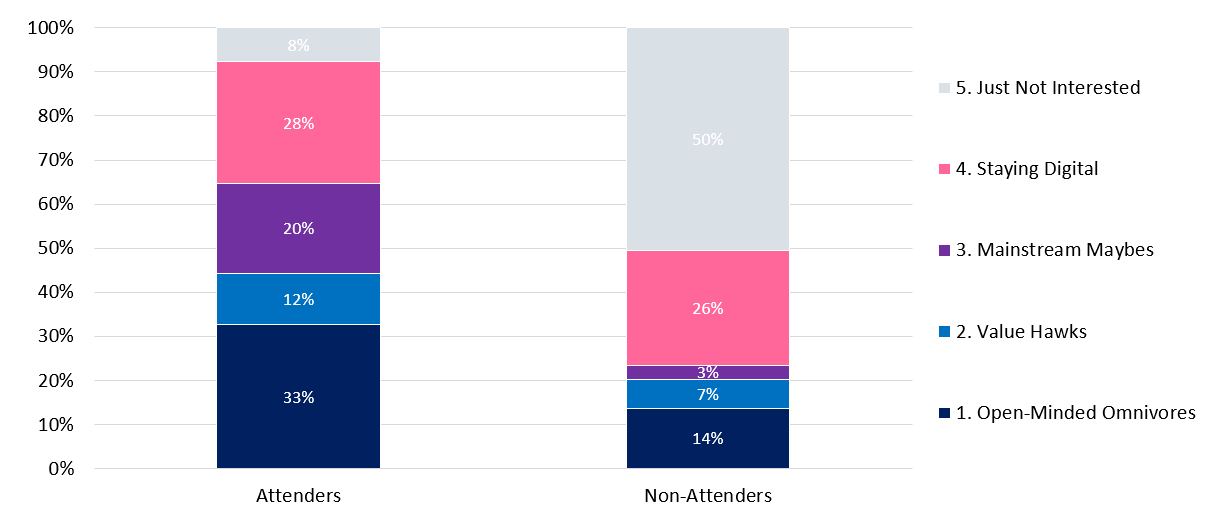Case Study | How Arizona Opera Revised Strategy During The Shutdown

Jamie Alexander
Vice President, Growth and Development
THE SITUATION
When the pandemic closed the cultural sector, the leadership team at Arizona Opera recognized an opportunity for the company to take a broad look at strategy. The company had recently shifted its programmatic offerings in the face of underperforming subscription sales and contributions, and decided that the shutdown of regular performances provided the perfect time to examine its practices and create a thorough strategy to develop audience and revenue for its future. With this goal in mind, Arizona Opera approached JCA Arts Marketing to act as a partner to collaborate on the creation of a strategic plan. As consultants, JCA Arts Marketing would address the company’s key strategic questions, which included:
- What audience segments exist in Arizona Opera’s audience, and how can the company best continue to engage and grow these segments?
- What is the ideal balance of repertoire to engage a core audience, while developing a new audience of the future?
- How will COVID-19 affect audience behavior, and consequently, what adjustments should be made to the 2021-22 season and beyond?
- What are Arizona Opera’s best prospect for donations? How can the company develop future donors and philanthropists?
THE PROJECT
At JCA Arts Marketing, we set out to answer Arizona Opera’s key strategic questions by crafting a project that leveraged database analysis and primary research. We conducted a Customer Behavior Analysis to uncover historical ticket buying and donation trends of Arizona Opera’s audience. We then conducted a Patron Preference Analysis using conjoint analysis—a sophisticated survey-based statistical tool to predict consumer behavior—to understand audience attitudes and potential demand for digital performances and in-person performances (following reopening). The main goal of the research: to devise an optimal path toward long-term audience development and sustainable philanthropic revenue.
THE OUTCOMES
Through findings from our research, we uncovered five segments in Arizona Opera’s current and potential audience, reflected below. The segments were developed using audience characteristics found in the Patron Preference Analysis, such as demographics, repertoire preference, price preference, and level of interest in digital performances.

At the culmination of the research, we used this segmentation and other uncovered trends from our analysis to provide recommendations to Arizona Opera about how to optimize its programming, marketing, and development efforts to reach its audience engagement and revenue goals. Recommendations included topics such as:
- The ideal balance of repertoire and number of performances for audience growth and revenue.
- Audience segments to prioritize for reopening and beyond, and tactics to engage them.
- The ideal price points for in-person and digital performances.
- House scaling recommendations for all four theatres in which Arizona Opera performs.
- Tactics to increase donations from ticket buyers.
A particular benefit of the audience segmentation above, is that it gives the company further sophistication in its approach to programming—by defining the goal and audience each opera serves.
Joe Specter, president and general director of Arizona Opera says: “JCA’s findings have helped us grow in our understanding of how we can better serve existing audiences, while shining a light on how we might expand our reach and impact with new audiences in the future.”
In ongoing consulting with the organization, we are working with the team on using the Segmentation Engine to put tactics for audience growth into action. We look forward to sharing updates on further progress that the company has made using the analysis and the Segmentation Engine tool!
THE NEXT PHASE
We know that when patrons return to in-person performances, their preferences and value perceptions will have changed. That’s why it is more important than ever to truly understand your audience. If you would like more information about how your organization can be strategic in their approach to revenue and audience development, read more about our Patron Preference Analysis or contact us.

